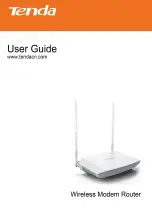
4-40
C
HAPTER
4: S
YSTEM
C
ONFIGURATION
Output Antenna
– Selects the use of both fixed antennas operating in diversity
mode or a single antenna. (Default: Diversity)
Both: The radio uses both antennas in a diversity system. Select this method
when the Antenna ID is set to “3Com Integrated Antenna” to use the access
point's integrated antennas.
Right: The radio only uses the antenna on the right side (the side closest to the
access point LEDs). Select this method when using an optional external antenna
that is connected to the right antenna connector.
Left: The radio only uses the antenna on the left side (the side farthest from the
access point LEDs). Select this method when using an optional external antenna
that is connected to the left antenna connector.
Transmit Power
– Adjusts the power of the radio signals transmitted from the
access point. The higher the transmission power, the farther the transmission
range. Power selection is not just a trade off between coverage area and
maximum supported clients. You also have to ensure that high-power signals do
not interfere with the operation of other radio devices in the service area.
(Options: 100%, 50%, 25%, 12%, minimum; Default: 100%)
Maximum Transmit Data Rate
– The maximum data rate at which the access point
transmits unicast packets on the wireless interface. The maximum transmission
distance is affected by the data rate. The lower the data rate, the longer the
transmission distance. (Options: 6, 9, 12, 18, 24, 36, 48, and 54 for 802.11a; 1,
2, 5.5, 6, 9, 11, 12, 18, 24, 36, 48, and 54 for 802.11b/g; Default: 54 Mbps)
Maximum Multicast Data Rate
– The maximum data rate at which the access
point transmits multicast and broadcast packets on the wireless interface.
(Options: 24, 12, 6 Mbps; Default: 6 Mbps for 802.11a; 1, 2, 5.5, 11, Default
5.5 Mbps for 802.11b/g)
Beacon Interval
– The rate at which beacon signals are transmitted from the
access point. The beacon signals allow wireless clients to maintain contact with
the access point. They may also carry power-management information.
(Range: 20-1000 TUs; Default: 100 TUs)
NOTE:
The Antenna ID must be selected in conjunction with the Output Antenna
to configure proper use of any of the antenna options.
NOTE:
When operating the access point using 5 GHz channels in a European
Community country, the end user and installer are obligated to operate the device
in accordance with European regulatory requirements for Transmit Power Control
(TPC).
Summary of Contents for 3CRWE876075 / WL-546
Page 6: ...6...
Page 14: ...1 6 CHAPTER 1 INTRODUCTION...
Page 40: ...3 12 CHAPTER 3 INITIAL CONFIGURATION...
Page 68: ...4 28 CHAPTER 4 SYSTEM CONFIGURATION Figure 32 WDS and Spanning Tree Settings...
Page 254: ...5 152 CHAPTER 5 COMMAND LINE INTERFACE...
Page 258: ...6 4 CHAPTER 6 TROUBLESHOOTING...
















































